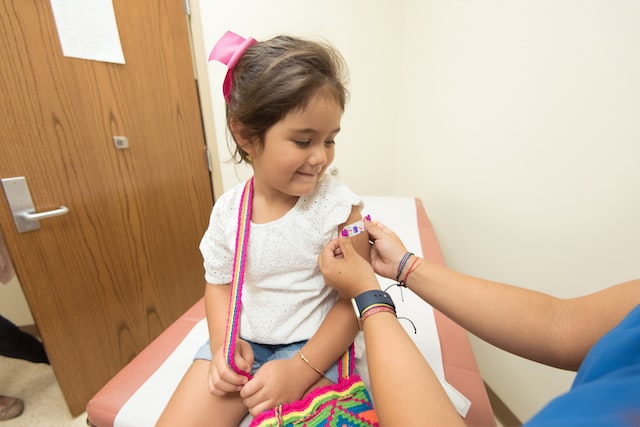If you have a child with attention deficit hyperactivity disorder (ADHD), navigating their treatment options can be challenging.
There are various medications and non-drug treatments, and deciding which route to take can be overwhelming.

Because of this reason, you need to be well-informed about the most recommended ADHD treatment in Dubai and other options you can include in your child’s therapy modality.
Although your childs specialist can answer all your questions and provide all the details you need about each treatment, you should do additional research on your own to get as much relevant, up-to-date information as you can.
When you have all the information you need, you can create a good treatment plan to help your child and family manage this condition.
Things to Know About Creating an ADHD Treatment Plan for Your Child
There are several important things you have to know when you’re working with your healthcare provider to create a treatment plan for your child.
Knowing these details can help you come up with a plan that works for your little one and everyone involved in the treatment.
These must-know facts include the following:
1. Frequent exercise and outdoor time are key elements.
Exercise is one of the safest, easiest and most effective ways to manage the symptoms of ADHD.
Physical activity promotes the release of dopamine, norepinephrine and serotonin, aloof which are hormones that affect focus and attention.
Additionally, exercise stimulates the brain’s frontal lobe, which controls executive functions. These skills which many individuals with ADHD score low in include paying attention, organizing, planning, multitasking and managing time.
Regular exercise is important for helping children with ADHD since working out can be an outlet they can use to release pent-up energy. It can also reduce their aggressive behaviors and thoughts.
Dancing, gymnastics, hiking, cycling and other activities requiring close attention to body movements are beneficial for children with ADHD. Team sports are good options as well.
If your child is a bit older, you can create a workout program for them so that they can gain more health benefits.
To help your child get more benefits from exercising, let them work out or engage in their choice of sports or activities outdoors. Letting them play in a park, playground or your yard or simply immersing themselves in nature can help them reduce their symptoms.
2. Tread carefully with drug treatments.
Children diagnosed with severe cases of ADHD and causing problems in school or at home are usually prescribed pharmacological stimulants and non-stimulants to alter the levels of dopamine and norepinephrine in their bodies.
Although these medicines can significantly reduce a child’s symptoms of ADHD, they come with side effects that can take a toll on the patient.
If your child’s healthcare provider wants to prescribe drugs as treatment for your little one, ensure you are comfortable with their recommendation. Discuss with the doctor all concerns you may have and read various materials to learn as much as you can about the medication.
If your child’s symptoms are mild, behavior therapy is usually enough to help them manage their conditions.
Remember that medication is not the only option you should include in your treatment plan. Work with your healthcare provider to understand them and choose the most effective ones for your child.
3. Focus on therapeutic interventions.
Regardless of the severity of your child’s symptoms, therapy should be included in their treatment plan.
Behavioral therapy, or behavior modification, is one of the most effective treatments for children with ADHD.
This therapy helps you reinforce positive or desired behaviors through rewards and praise.
Consequently, you can decrease problem behaviors by setting limits and consequences.
To get the best results from this therapy, you need to work closely with your child’s teachers and other people involved in their education and other treatments.
Neurofeedback therapy is another non-drug treatment worth adding to your child’s treatment plan. It is a type of cognitive behavioral therapy that uses electroencephalography or EEG to monitor brainwaves to give the patient and their brain instantaneous feedback about their brain activity.
During a therapy session, your child will sit in a chair to view a movie of their choice. While watching, the specialist will listen and monitor their brain activity through sensors placed on their head.
When your child’s brain shows a desirable brainwave pattern, the picture and sound quality from the screen will improve.
Through repeat sessions, your child’s brain will be trained to focus on what they’re doing without being easily distracted, which means a significant reduction in their ADHD symptoms.
Other forms of therapy your child may receive include occupational therapy and psychotherapy.
4. Be open-minded.
Creating a treatment plan means including different ways to help your child manage and reduce their symptoms.
Because of this, you have to avoid prioritizing or focusing only on one or two treatments.
Moreover, you must be open to adding other options or expert-recommended tips and strategies along the way. This may include modifying your child’s diet and limiting their daily screen time.
When creating your treatment plan, it is also important to remember that what works for another child may not work for another.
Therefore, you need to be open-minded and stay up-to-date regarding the latest news, studies and new treatment options for ADHD.
Conclusion
A treatment plan is crucial for helping your child manage their ADHD symptoms and your family cope with this condition.
Make sure you have one after getting a diagnosis and be ready to modify it when needed to ensure it continuously works for everyone’s benefit, especially for your child.